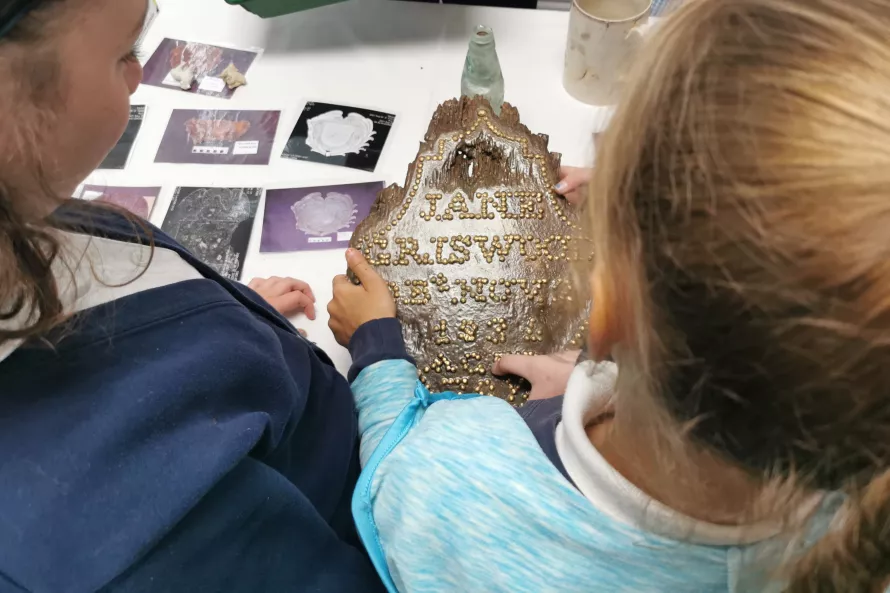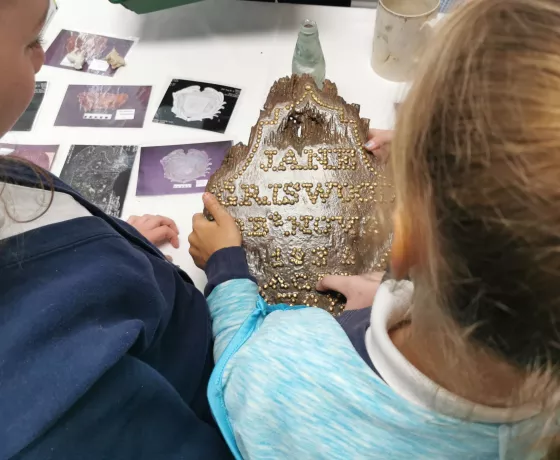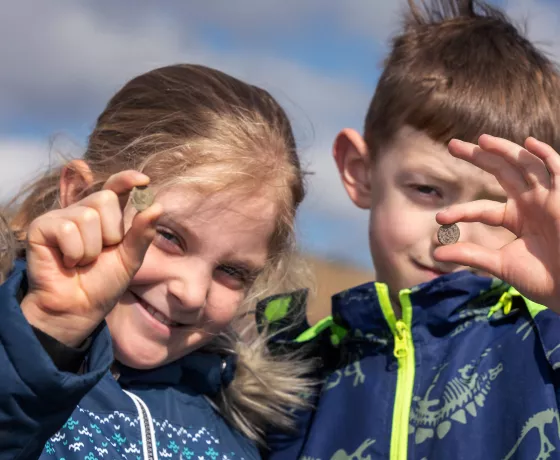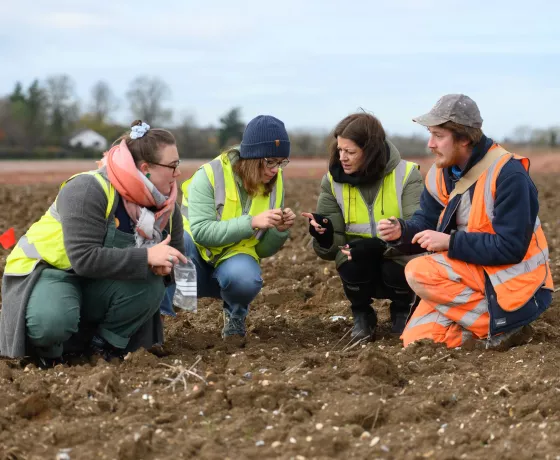Oxford Archaeology have recently attended two STEM events, sharing exciting findings from our sites and showcasing the science that made them possible.
In May, we teamed up with the University of Central Lancashire’s archaeology department to take part in the annual UCLAN science fair. We themed our stand and workshops around recent excavations at Windy Harbour near Blackpool, that unearthed a prehistoric landscape including Mesolithic hunter-gatherer camps and some of the earliest evidence for the first Neolithic farmers in Lancashire. It was wonderful to meet all the young people, many of whom had been learning about prehistory in their lessons and were fascinated to be able to hold real examples of the stone tools they had learned about! Visitors could also try their hand at several archaeology challenges – from spotting and identifying Neolithic seeds, to re-fitting flint debitage on a core. We also had an activity that invited them to think about the different types of food Mesolithic and Neolithic people would have had access to for their breakfast.
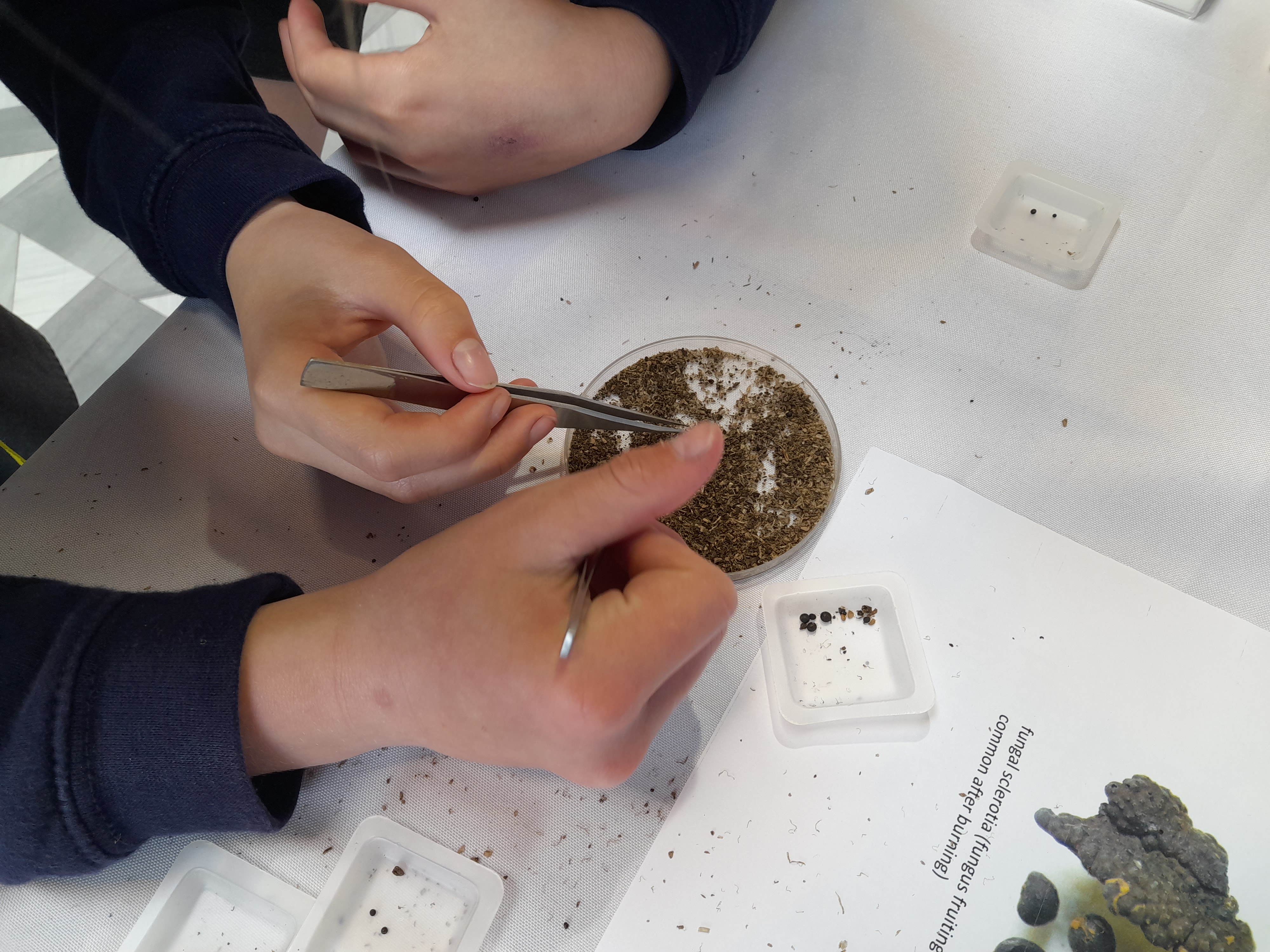
Students taking part in the seed identification activity.
It was great to think outside the box to deliver and communicate a specialism. I really enjoy delivering STEM workshops."
Rob, Assistant Supervisor.
As well as the stand we ran some workshops. Students could learn about flint knapping in ‘Crash and bang: Sounds, forces and stone tool making’ during which they used boiled sweets and wooden mallets to think about how waves travel through different materials and cause fractures. Or they could visit ‘Potted Prehistory’ and learn about how the arrival of pottery changed our eating habits – whilst making their very own carinated bowl, inspired by prehistoric pottery.
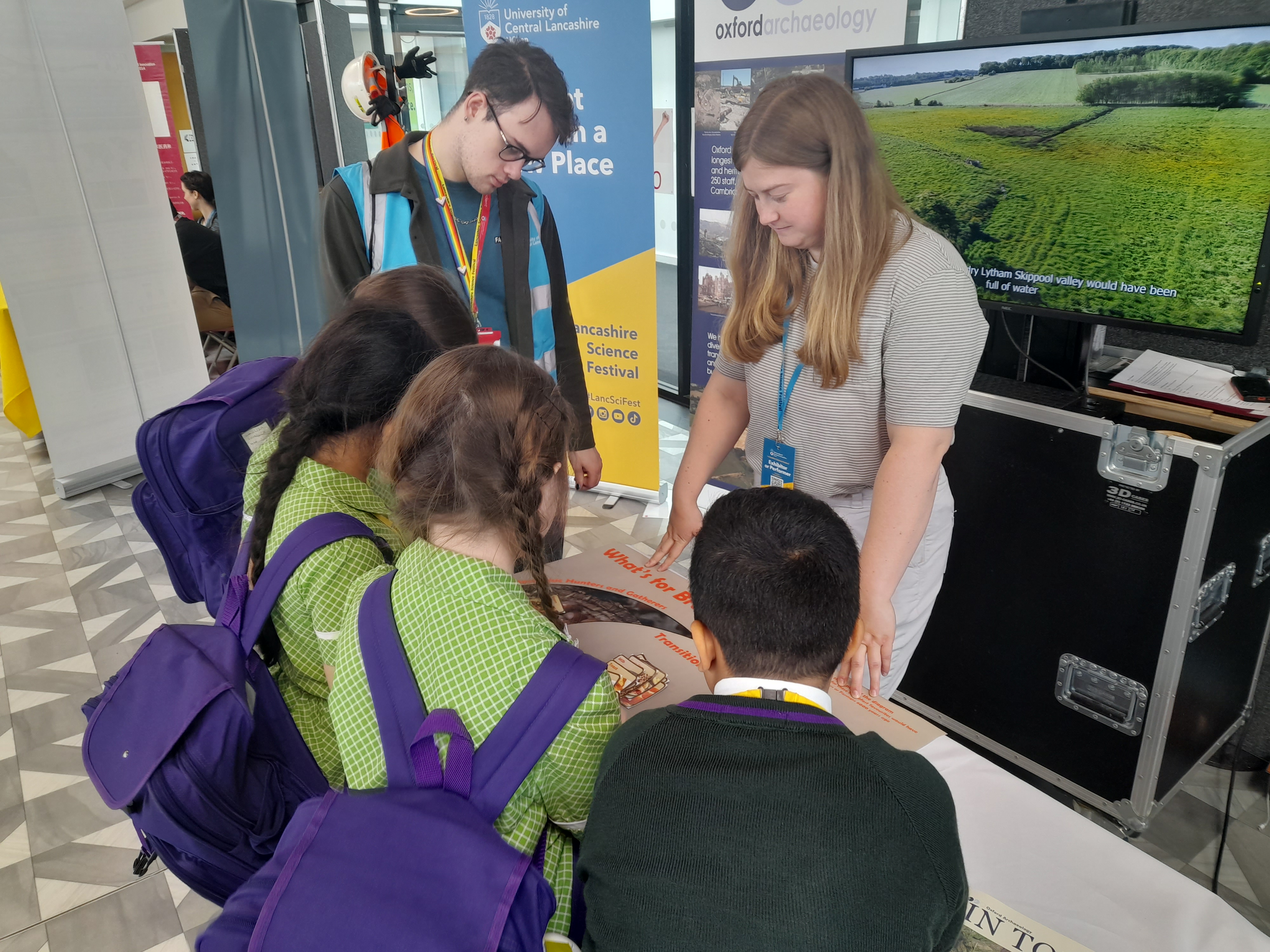
Students having a go at the 'What's for Breakfast' activity.
In June, we crossed over to the east of the country, returning to the Humber STEM primary school event at Craven Park. Alongside Balfour Beatty, we were able to explore how archaeology fits in with construction and share findings from the archaeological investigations at Trinity Burial Ground on Castle Street, where we carefully and respectfully excavated and reburied the funerary remains.
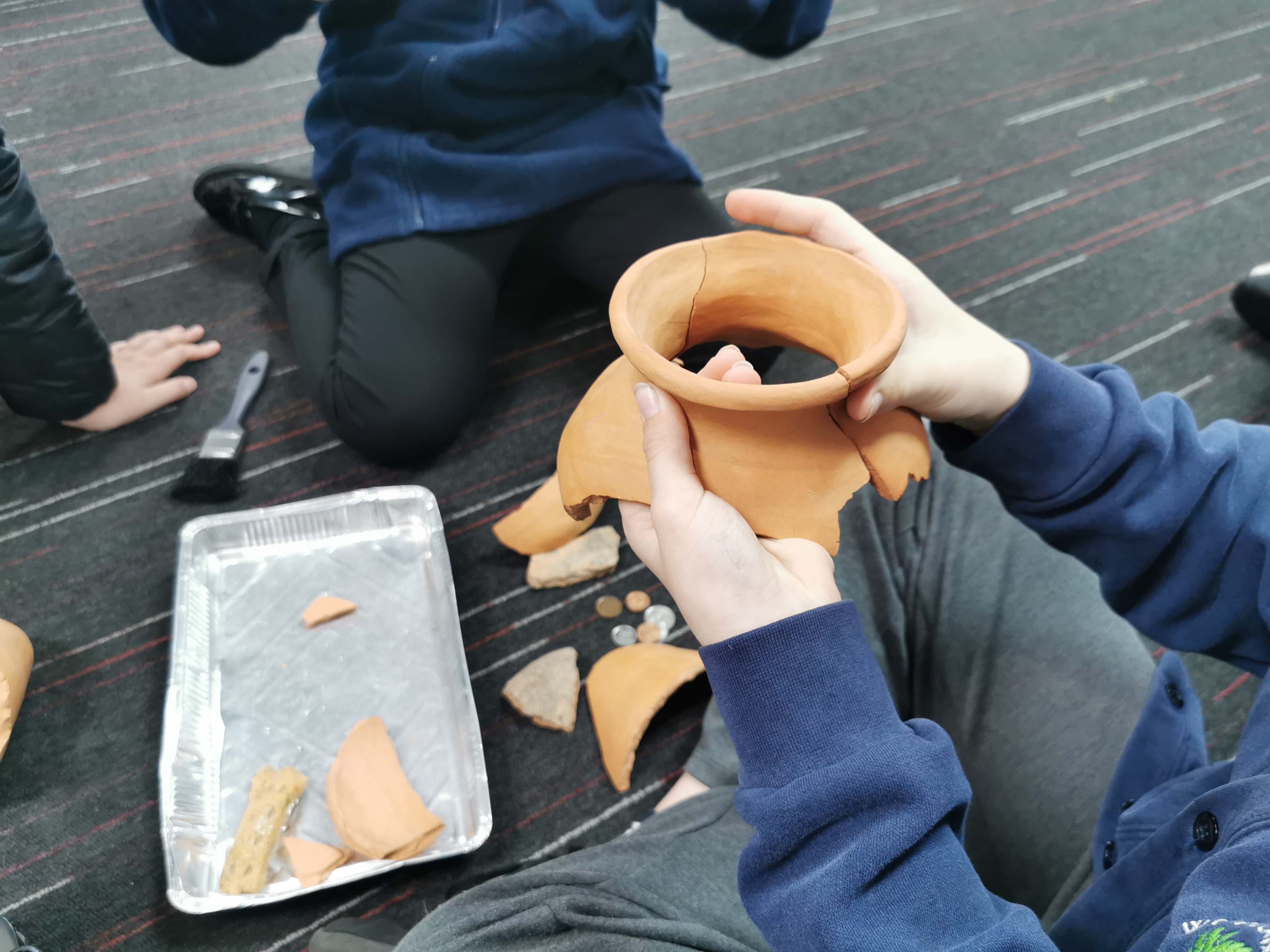
Students putting together the pottery pieces they excavated from the dig boxes.
I really enjoyed engaging with the pupils, first getting an idea of what they already knew about the subject and then, through games and finds handling, helping them to understand aspects of what Archaeologists do and, more specifically, what we have been doing in their own city at Trinity Burial Ground. It was really encouraging when, after the games, they engaged with the subject and wanted to learn more. There were definitely a couple of budding scientists in the group, if not a couple of future archaeologists. Fingers-crossed!"
Emma, Assistant Supervisor
As well as having some fun with the PPE dig box game, we discussed what types of materials survive over time and the scientific processes archaeologists use to learn more about them, such as x-rays. We also explored how DNA is helping archaeologists working on Trinity Burial Ground to identify family groups. A special mention and thank you to the Hull Minster who loaned us replicas of finds discovered during our excavations to share with the students. You can find out more about the work Hull Minster are doing to share the archaeology here: Homepage | Hull Minster Heritage
Thank you to everyone who came and visited us. It really brought home how there is an aspect of archaeology for every budding scientist!

The finds table, showing replicas kindly loaned by Hull Minster, such as the Siegburg bowl, alongside images of finds from Trinity Burial Ground and comparative objects from our handling collection.
Other posts in this collection
Read the latest posts from the Community Archaeology team.

